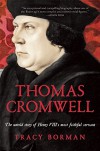SusannaG - Confessions of a Crazy Cat Lady
Just another GR refugee. Other than that, I had a stroke in 2004, and read almost anything I can get my hands on, though I have a particular weakness for history, mystery, and historical fiction.
Currently reading
Michelangelo and the Pope's Ceiling

Michelangelo and the Pope's Ceiling is another very good work of art history from Ross King. It covers in most detail the years 1505, when Michelangelo was called to Rome from Florence by Pope Julius II to make his tomb, to 1512, when he finished the ceiling of the Sistine Chapel. It also takes a good look at Julius II, at Raphael (who was working next door), and to a lesser extent the other personalities dominating the Italian scene in the first decade or so of the 16th century.
Michelangelo was as grumpy as he was talented. He was overjoyed to get the job of making Pope Julius II's tomb (seen as an affirmation that he was indeed the world's best sculptor), and then very angry that Julius changed his mind, and wanted him to fresco a ceiling instead. (He had not worked in that medium in half his lifetime, since he was a teenager in the shop of Domenico Ghirlandaio.) I can only envision him muttering, "Damn it, Pope Julius, I'm a sculptor, not a painter!"
He continued grumpy as he went to work on the ceiling. His assistants were annoying. His neck hurt. Someone was stealing the marble he had bought for the pope's tomb, which had been left just lying around. His family back in Florence were all lazy, or unambitious, or too ambitious, and expected him to pay for everything. He wasn't being paid enough. The pope was a megalomaniac who knew nothing about art.
That last one was pretty much true. Julius II was a piece of work. He was intent on re-conquering lands that had formerly been part of the Papal States - and he was then shocked and surprised that when he went to war with his neighbors, they called in someone larger to protect them. (That would be France.) He issued coins which compared him to Julius Caesar on one side, and to Jesus Christ on the other.
He also did not have great taste in art. His original plans for the ceiling featured strongly the emblems of his own family - oak leaves - (which would have been much simpler to execute) and Michelangelo rejected them out of hand. Then, when it was done, he insisted it wasn't really done, because it hadn't been covered in gold leaf. Julius disliked the existing frescoes in the papal bedroom (the art had been installed by one of his recent, loathed, predecessors, Pope Alexander VI, a Borgia) so much he moved down a floor. He hired Raphael to decorate the library of his new suite.
Raphael was not nearly as grumpy as his rival at work over in the chapel, and was dubious about Michelangelo's skills as a painter - until he saw the half-finished ceiling. (Michelangelo hated visitors interrupting his work.) He then paid him a painter's compliment, inserting Michelangelo into the already mostly done "School of Athens." He immortalized one notoriously grumpy genius as another notoriously grumpy genius - Heraclitus. (Michelangelo would also paint a self-portrait of himself on the ceiling; as a grumpy Jeremiah.)
When the ceiling was done in 1512, Michelangelo might have thought he was done with the Sistine Chapel. That was far from the case. He'd be called back to work on its altar wall, painting the Last Judgment, in the 1530s and 1540s. And while he was still finishing up that work, he got the job as architect of St. Peter's basilica. ("Damn it, Pope Paul, I'm a sculptor, not an architect!")
Recommended to those interested in Michelangelo, in the Renaissance, or just in very readable art history.
















 7
7
 7
7